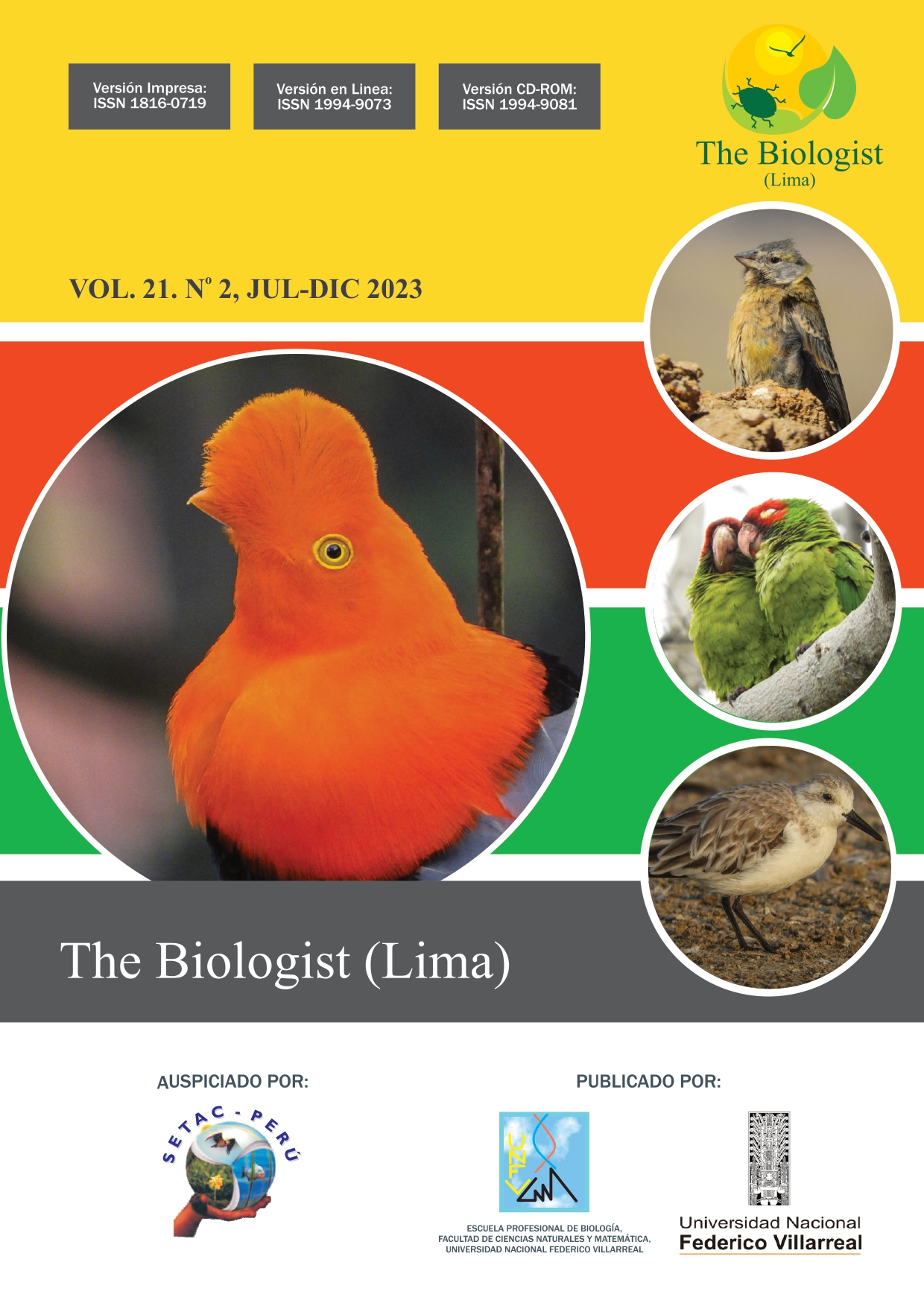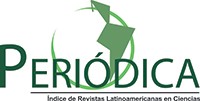Rare heteromorphism in chromosome 9. About a case
DOI:
https://doi.org/10.24039/rtb20232121621Keywords:
Chromosome 9, heteromorphism, Infertility, miscarriagesAbstract
Morphological variations of chromosome 9 constitute the second most common heteromorphism in humans, and can be observed in 6-8% of the general population. Carrier individuals have a history of reproductive disorders, infertility, and spontaneous abortions. The objective of this research was to present a case of a rare heteromorphism in chromosome 9, detected in the "Paquito González Cueto" Pediatric University Hospital located in the city of Cienfuegos, Cuba. A couple came to the center from the infertility consultation due to the existence of recurrent spontaneous abortions, for which a cytogenetic postnatal diagnosis is proposed. The result of the woman was normal and a rare finding was found in the husband's chromosome 9, which was corroborated as: 46, xy; der (9) inv.dup (9) (p11q13). It is concluded that it was an unusual heteromorphism, 2 polymorphic findings in the same chromosome with duplication and inversion of heterochromatin never before found in the literature. The presence of these rare variants in the same chromosome can cause spontaneous abortions in the couple.
Downloads
References
Aparicio-Rodríguez, J.M. (2013). Aberraciones cromosómicas en un hospital pediátrico de tercer nivel. Anillos de los cromosomas 13 y 18. Revista Iberoamericana de las Ciencias de la Salud, 2, 1-20.
Baghbani, F., Mirzaee, S., & Hassanzadeh-Nazarabadi, M. (2014). Association of heteromorphism of chromosome 9 and recurrent abortion (ultrasound diagnosed blighted ovum): A case report. Iranian Journal of Reproductive Medicina, 12, 357–360.
Contreras-Castro, D.T., Luna-Barrón, B., Taboada-López, G., Rada-Tarifa, A., & Lafuente, Álvarez, E. (2017). Frecuencia de aberraciones cromosómicas en pacientes del instituto de genética- UMSA período 2011 – 2015. Cuadernos Hospital de Clínicas, 58, 14-19.
Coulam, C.B. (1991). Epidemiology of recurrent spontaneous abortion. American Journal of Reproductive Immunology, 26, 23-27.
Cristofolini, D.M., Mafra, F.A., Neto R.P., De Almeida-Barros, R., Amaro-Dos Santos, A., Peluso, C., Machado-Gava, M., Ghirelli-Filho, M., Bianco, B., & Parente-Barbosa, C. (2012). Correlation between chromosomal variants and male infertility in a population of Brazilian infertile men. Reproductive System & Sexual Disorders, 1, 105-110.
Dana, M., & Stoian, V. (2012). Association of pericentric inversion of chromosome 9 and infertility in Romanian population. Maedica (Bucur), 7, 25–29.
Gómez-Regalado, F., Gallo-Ochoa, M., Vargas-Martínez, F., Monterrosas-Minnuti, C.A., Almanzor-González, O.E., & Camarena-Romero, S.A. (2017). Azoospermia en varón infértil con polimorfismo heterocromático 46,XY,9qh+. Revista Mexicana de Urología, 77, 202-212.
González, N., Méndez, L.A., del Monte, E., Soriano, M., Barrios, A., & Morales, E. (2014). Estimación de las frecuencias de las inversiones cromosómicas y la posible repercusión de la inversión pericéntrica del 9 en las fallas reproductivas. Congreso Internacional de Genética Comunitaria http://geneticacomunitaria2014.sld.cu/index.php/geneticacomunitaria/2014/paper/view/451.
Hong, Y., Zhou, Y., Tao, J., Wang, S., & Zhao, M. (2011). Do polymorphic variants of chromosomes affect the outcome of in vitro fertilization and embryo transfer treatment?. Human Reproduction, 26, 933-940.
Hussen, D.F., Hammad, S.A., Refaat, K.M., Ashaat, E.A., Aglan, M.S., Otaify, G.A., El-Bassyouni, H.T., & Temtamy, S.A. (2019). Chromosomal aberrations and chromosomal heteromorphisms among young couples with recurrent spontaneous abortion. Middle East Journal Medical Genetics, 8, 48-54.
International System for Human Cytogenetic Nomenclature (ISHCN) (2013). Recommendations of the International Standing Committee on Human Cytogenetic Nomenclature. Karger Publishers.
Karaca, Y., Pariltay, E., Mardan, L., Karaca, E., Durmaz, A., Durmaz, B., Aykut, A., Akin, H., & Cogulu, O. (2020). Co-occurrences of polymorphic heterochromatin regions of chromosomes and effect on reproductive failure. Reproductive Biology, 20, 42-47.
Madon, P., Athalye, A., & Parikh, F. (2005). Polymorphic variants on chromosomes probably play a significant role in infertility. Reproductive Biomedicine Online, 11, 726-732.
Mafra, F.A., Christofolini, D.M., Bianco, B., Gava, M.M., Glina, S., Belangero, S.I., & Barbosa C.P. (2011). Chromosomal and molecular abnormalities in a group of Brazilian infertile men with severe oligozoospermia or non-obstructive azoospermia attending an infertility service. International Brazilian Journal of Urology, 37, 244-251.
Martínez-Taibo, C., Tolaba, N.N., DSailan, E., Marinaro, J., Laudicina, O.A., & Huidobro, P. (2018). Inversiones cromosómicas (anomalías estructurales poco frecuentes) asociadas a fenotipo normal, dudoso y patológico. Prensa médica (Argentina), 104, 478-488.
Mohsen-Pour, N., Talebi, T., Naderi, N., Moghadam, M.H., Maleki, M., & Kalayinia, S. (2022). Chromosome 9 Inversion: Pathogenic or Benign? A Comprehensive Systematic Review of all Clinical Reports. Current Molecular Medicine, 22, 385-400.
Molina, O., & Méndez-Rosado, L. A. (2014). Inversión inusual del cromosoma 21 en una paciente abortadora habitual. Revista Cubana de Obstetricia y Ginecología, 40, 349-353.
Mottola, F., Santonastaso, M., Ronga, V., Finelli, R., & Rocco L. (2023). Polymorphic Rearrangements of Human Chromosome 9 and Male Infertility: New Evidence and Impact on Spermatogenesis. Biomolecules, 13, 729.
Rajangam, S., Tilak, P., Aruna, N., & Rema, D. (2007). Karyotyping and counseling in badobstetric history and infertility. Iranian Journal of Reproductive Medicine, 5, 7-12.
Reyes-Reyes, E., Orive-Rodríguez, N.M., González, G.K., Romero-Portelles, L., & Díaz-Plá, I. (2017). Aberraciones cromosómicas como causa de infertilidad: diagnóstico y asesoramiento genético en Las Tunas. Revista Electrónica, 42, 1-7.
Sofia, C.L., Chinnaswamy, P., & Mahalingam K. (2015). Cytogenetic analysis of male infertility. IOSR Journal Pharmacy and Biological Sciences, 10, 15-21.
Soriano-Torres, M., Morales-Rodríguez, E., Rojas-Betancourt, I., & Méndez-Rosado, L.A. (2014). Variantes de la heterocromatina y la eucromatina en el diagnóstico prenatal citogenético. Revista Cubana de Obstetricia y Ginecología, 40, 79-88.
Vijay, S., Narayanan, G., Sarojam, S., Raveendran, S.K., & Hariharan, S. (2016). Enigmatic Inv(9): A Case Report on Rare Findings in Hematological Malignancies. Iranian Red Crescent Medical Journal, 18, e25062.
Xie, X., Li, F., Tan, W., & Tang, J. (2020). Analysis of the clinical features of pericentric inversion of chromosome 9. Journal of International Medical Research, 48, 1–9.
Downloads
Published
How to Cite
Issue
Section
License

This work is licensed under a Creative Commons Attribution-NonCommercial-NoDerivatives 4.0 International License.
Objeto: El AUTOR-CEDENTE transfiere de manera TOTAL Y SIN LIMITACIÓN alguna al CESIONARIO (Revista The Biologist (Lima)) los derechos patrimoniales que le corresponden sobre sus obras por el tiempo que establezca la ley internacional. En virtud de lo anterior, se entiende que el CESIONARIO adquiere el derecho de reproducción en todas sus modalidades, incluso para inclusión audiovisual; el derecho de transformación o adaptación, comunicación pública, traducción, distribución y, en general, cualquier tipo de explotación que de las obras se pueda realizar por cualquier medio conocido o por conocer en el territorio nacional o internacional.
Remuneración: La cesión de los derechos patrimoniales de autor que mediante este contrato se hace será a título gratuito.
Condiciones y legitimidad de los derechos: El AUTOR-CEDENTE garantiza que es propietario integral de los derechos de explotación de la(s) obra(s) y en consecuencia garantiza que puede contratar y transferir los derechos aquí cedidos sin ningún tipo de limitación por no tener ningún tipo de gravamen, limitación o disposición. En todo caso, responderá por cualquier reclamo que en materia de derecho de autor se pueda presentar, exonerando de cualquier responsabilidad al CESIONARIO.
Licencia de acceso abierto: El AUTOR-CEDENTE autoriza que manuscrito publicado en la Revista Científica The Biologist (Lima) (versión Impresa ISSN 1816-0719, versión en línea ISSN 1994-9073) permanece disponible para su consulta pública en el sitio web http://revistas.unfv.edu.pe/index.php/rtb/index y en los diferentes sistemas de indexación y bases de datos en las que la revista tiene visibilidad, bajo la licencia Creative Commons, en la modalidad Reconocimiento-No comercial- Sin Trabajos derivados –aprobada en Perú, y por lo tanto son de acceso abierto. De ahí que los autores dan, sin derecho a retribución económica, a la Escuela Profesional de Biología, Facultad de Ciencias Naturales y Matemática de la Universidad Nacional Federico Villarreal (EPB - FCCNM - UNFV), los derechos de autor para la edición y reproducción a través de diferentes medios de difusión.









































